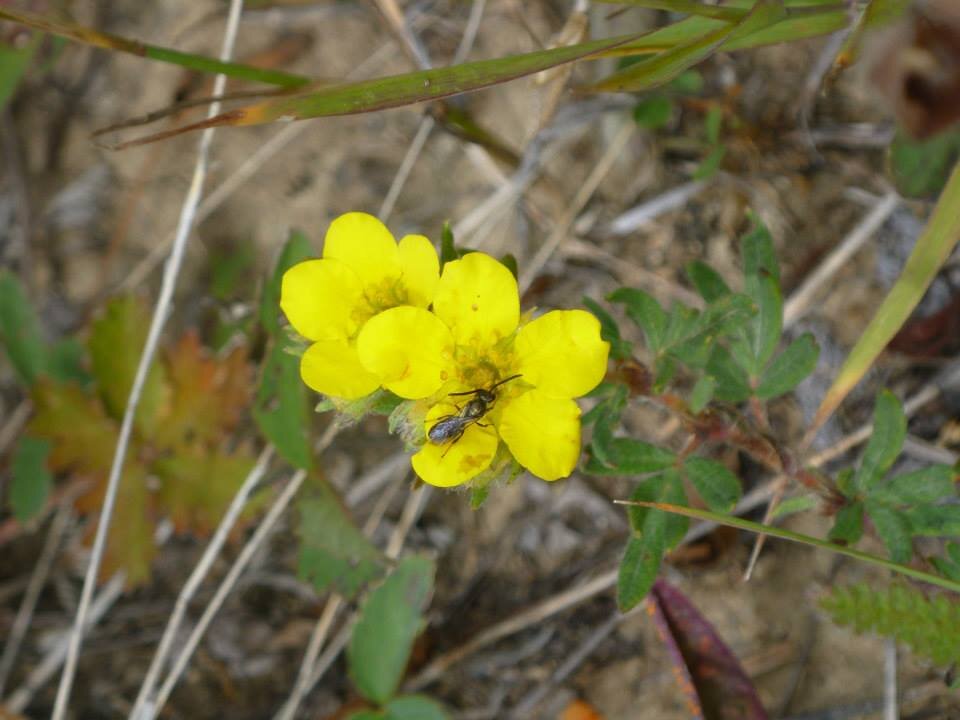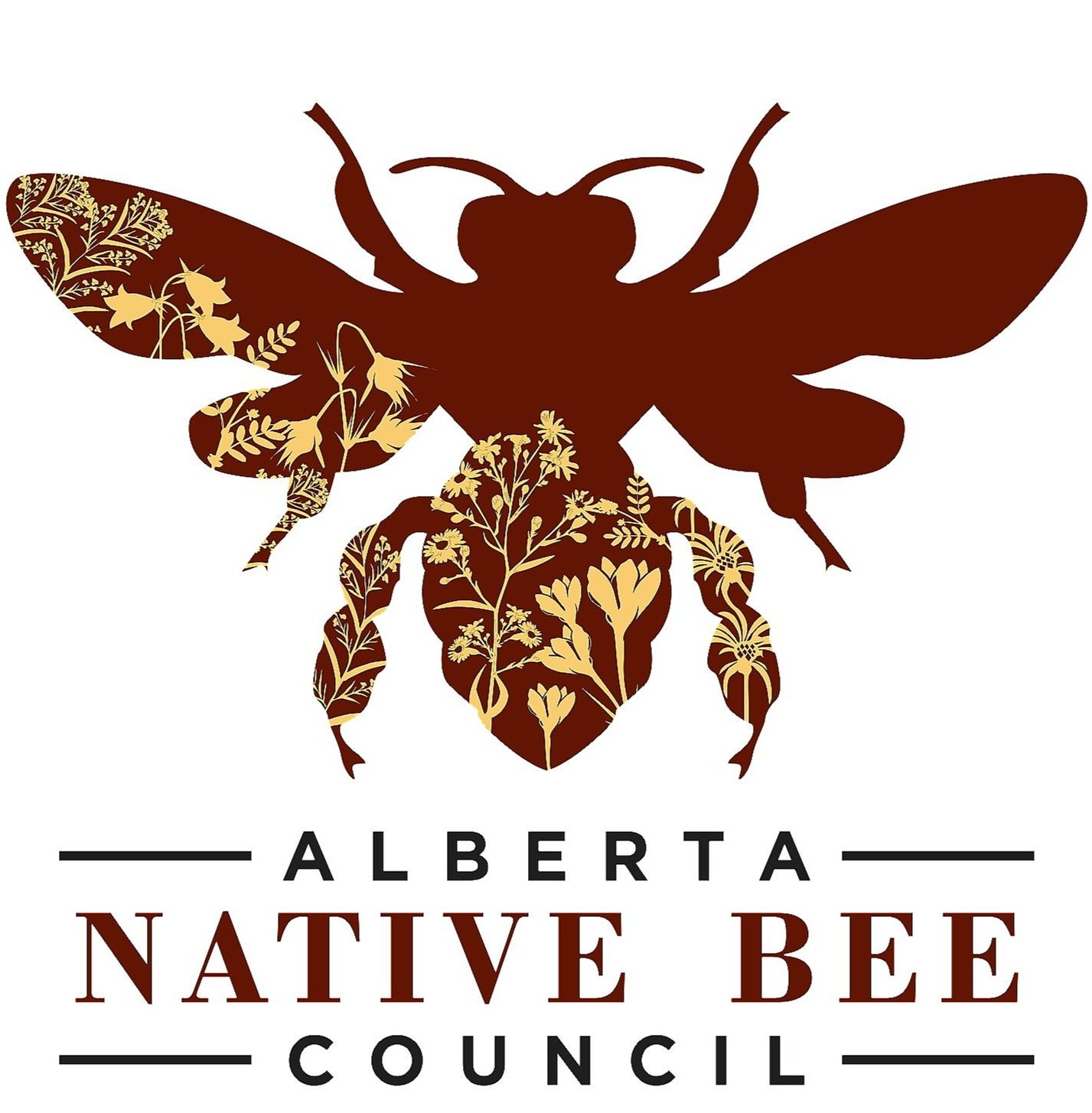
Halictidae
Halictidae (sweat bees)
Of the 190 species of bees in the Halicitdae family found in Canada, 81 of them occur in Alberta.
Some of the prettiest bees in Alberta belong to the Halictidae family. Many are metallic green; others are blue or copper and some are black. They are commonly referred to as "sweat bees" (especially the smaller species), as they are often attracted to perspiration.
Most halictids nest in the ground, some are completely solitary but others share the entrance to their nests. They lay their eggs in cells lined with waterproof material produced in the Dufour’s gland, and provision their young with a mixture of pollen and nectar.
Agapostemon (sweat bees)
Of the 8 species of Agapostemon bees found in Canada, 6 of them occur in Alberta.
Agapostemon spp. (male)
Agapostemon are medium-sized (9 – 11 mm), brilliant green or blue-green bees, with yellow- and black-banded abdomens in the males.
They nest deeply in hard soil. Some species such as A. viriscens may nest in dense aggregations where multiple females share the same nest entrance. Beneath the common entrance burrow, each female digs her own brood cells and collects pollen and nectar to fashion the pollen ball upon which she will lay an egg.
Agapostemon are polylectic, with a wide range of floral hosts.
Dufourea (sweat bee)
Of the 8 species of Dufourea bees found in Canada, 5 of them occur in Alberta.
Dufourea are generally nondescript, small dark bees. They are solitary bees which line their nest cells with nectar that is tamped into the soil which provides some protection to the larva. Although Dufourea may nectar at a wide variety of floral hosts, they are generally quite restrictive in the plants from which they collect pollen. For example, D. maura is a Campanula oligege.
Keys and Guides
Bees of the genus Dufourea Lepeletier (Hymenoptera: Halictidae: Rophitinae) of Canada
Halictus (Sweat bees)
Of the six species of Halictus bees found in Canada, five of them occur in Alberta.
Halictus are small (7 – 11 mm), brown to black bees, sometimes greenish, with white stripes across the abdomen. Their common name (sweat bees) is due to their habit of sometimes siping sweat from humans.
Many Halictus are eusocial. A female will overwinter as a fertilized “foundress”. She will emerge in the spring and dig a nest in the soil which she will line with a waterproof material. She will lay a few eggs which will become female workers which will gather nectar and pollen and care for the next round of bee larvae. At the end of the season, some of the eggs will become males.
A few species in the genus have extensive geographic distribution, such as Halictus rubicundus, which spans virtually the entire Holarctic region. H. rubicundus is solitary at high altitudes and latitudes but has eusocial colonies in warmer areas.
Lasioglossum (sweat bees)
Of the 135 species of Lasioglossum bees found in Canada, 60 of them occur in Alberta.
Top left: Lasioglossum leuhalictus, Top right: Lasioglossum spp., Bottom left: subgenus Dialictus, Bottom right: Lasioglussum spp.
Lasioglossum bees are small (6 – 9 mm), usually black, mostly shiny and bald, sometimes with white bands on their abdomen. Some have a metallic sheen.
Almost all are soil-nesting bees with a range of lifestyles, ranging from solitary, sometimes nesting in aggregations, to eusocial.
Lasioglossum bees are polylectic and are found throughout the flowering season.
L. leucozonium and L. zonulum are introduced.
Sphecodes (cuckoo sweat bee)
Of the 32 species of Sphecodes bees found in Canada, 2 of them occur in Alberta.
Sphecodes are small bees with a shiny black thorax and usually with a red abdomen. They are cleptoparasites so do not have pollen-carrying hairs.
Sphecodes are cleptoparasites of Lasioglossum and Halictus bees. The adults consume nectar from a wide variety of floral hosts, but do not collect pollen as they do not provision their own nest.










